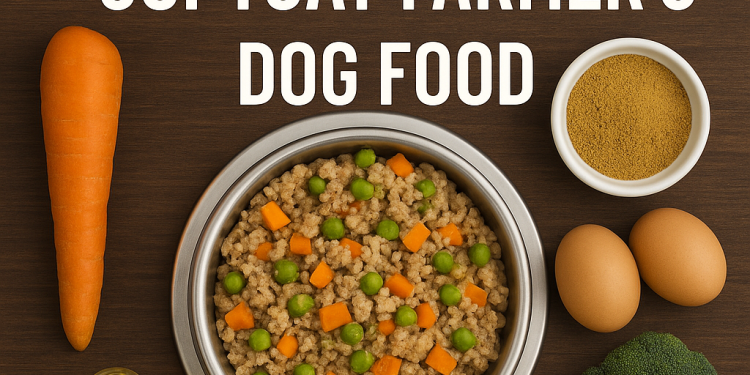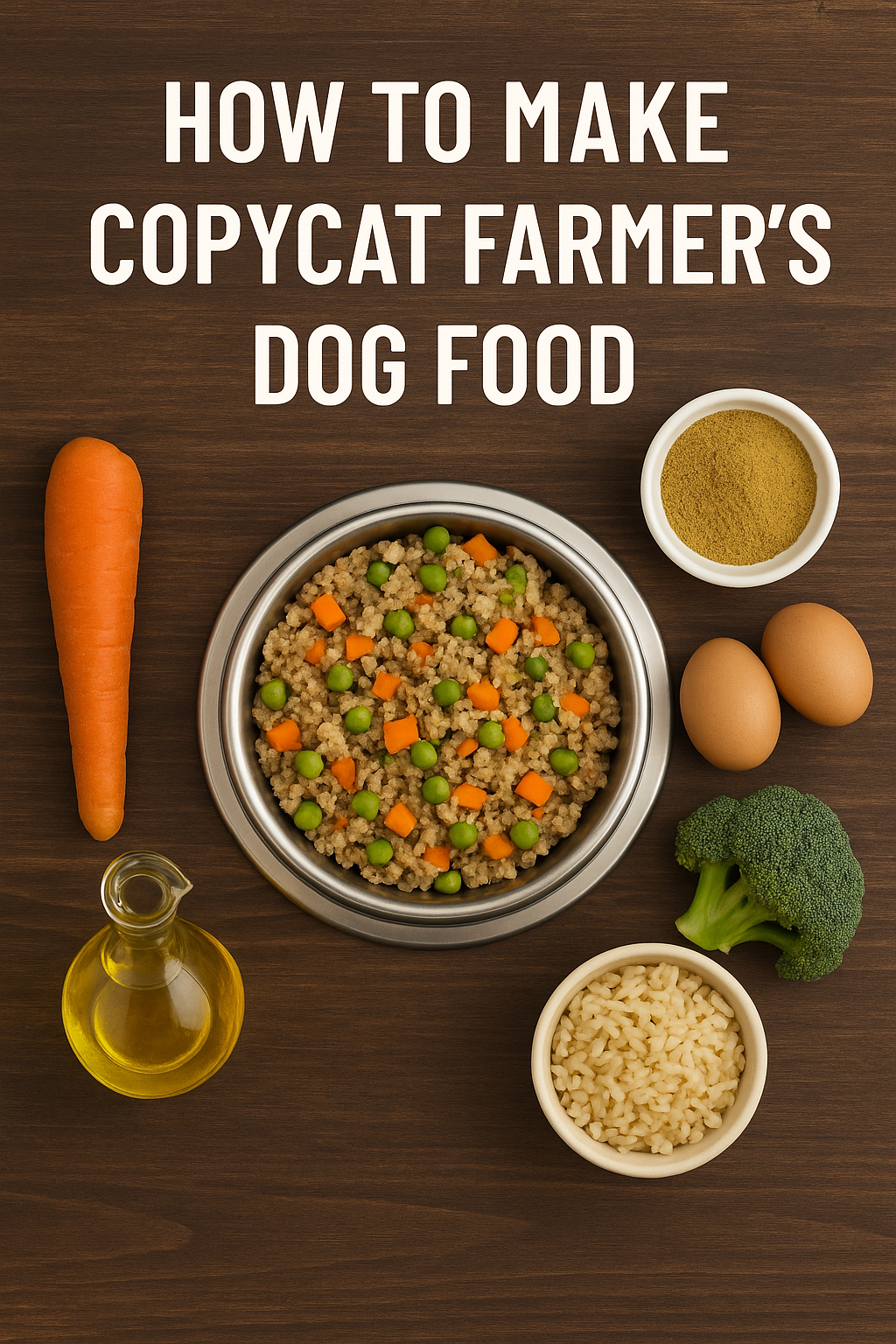Making fresh food for dogs at home has become popular, thanks in part to companies like The Farmer’s Dog which ship pre‑portioned, human‑grade meals. If you want to prepare a “copycat” version yourself, it’s important to understand what goes into those recipes and why balanced nutrition matters. This article explains the key ingredients used by The Farmer’s Dog, summarizes veterinary guidelines about homemade diets, and outlines general steps for making a balanced copycat meal.
What’s in The Farmer’s Dog Recipes?
The Farmer’s Dog formulates its meals using fresh, lightly cooked ingredients. Their recipes are built on the following components:
-
Meat (≥50 %) – Whole muscle and organ meat make up at least half of The Farmer’s Dog recipes. Whole beef, turkey, pork and chicken as well as organ meats like beef and chicken liver provide digestible protein and essential amino acids.
-
Vegetables – Green and orange vegetables such as carrots, green beans, Brussels sprouts and broccoli supply vitamins, phytonutrients and fiber. They also add moisture and help dogs feel full.
-
Fiber‑rich foods – Ingredients like chickpeas, sweet potatoes and lentils supply additional fiber and minerals and help regulate blood sugar,
-
Supplemental nutrients – To make the food complete and balanced, The Farmer’s Dog adds human‑grade supplements like fish oil, which supplies omega‑3 fatty acids, and a nutrient blend containing vitamins and minerals such as calcium, potassium, choline, taurine, zinc and vitamin E. These supplements ensure the meals meet nutritional standards.
-
Gentle cooking – Recipes are cooked at a relatively low temperature to kill pathogens while preserving nutrients. This differentiates the food from heavily processed kibble, which often uses high‑heat extrusion methods.
Why Balanced Nutrition Matters
According to the Association of American Feed Control Officials (AAFCO), six essential nutrients are required to support a dog’s life: water, carbohydrates (including fiber), vitamins, minerals, fat and protein. Providing the right amount of each nutrient is complex because dogs’ needs vary with life stage, breed, health and activity level. A balanced diet should therefore meet established nutrient profiles and energy requirements.
Essential nutrients at a glance
| Nutrient | Role in a balanced diet | Primary sources |
|---|---|---|
| Protein | Builds and maintains muscles, skin, hair and internal organs | Whole meats (beef, turkey, chicken), organ meats, eggs |
| Fat | Provides energy and supports skin and coat health | Fish oil, sunflower oil, sardines, hempseed |
| Carbohydrates & fiber | Supply energy and aid digestion | Sweet potatoes, chickpeas, lentils, brown rice |
| Vitamins & minerals | Support immune function, bone health and metabolic processes | Vegetables (carrots, spinach), nutrient supplements |
Homemade diets can be beneficial if formulated correctly, but most online recipes are incomplete. A large study at the University of California, Davis analyzed 200 published homemade dog food recipes and found that 95 % lacked at least one essential nutrient and more than 83 % had multiple nutrient deficiencies. Even recipes written by veterinarians were often deficient. Veterinary nutritionists therefore recommend that owners either feed a commercial diet that meets AAFCO standards or consult a board‑certified nutritionist when making homemade meals. Simply combining human foods without supplements can lead to imbalances
Steps to Create a Balanced Copycat Meal
If you decide to make a Farmer’s Dog‑style meal at home, use high‑quality ingredients and follow evidence‑based guidelines. Always consult your veterinarian or a board‑certified veterinary nutritionist before making major diet changes.
-
Choose human‑grade ingredients. Start with lean meat (beef, turkey, chicken or pork) and include organ meat such as liver to boost micronutrients. Add a variety of vegetables—carrots, green beans, Brussels sprouts, broccoli and spinach—to provide vitamins and fiber.
-
Include a carbohydrate/fiber source. Sweet potatoes, chickpeas, lentils or brown rice add fiber and complex carbohydrates.
-
Cook gently. Use a skillet or Dutch oven over medium heat with a small amount of sunflower oil. Cook the meat until no longer pink, then add vegetables and cook until tender. Keep the temperature low to preserve nutrients. Use a food thermometer to ensure all parts of the mixture reach at least 165 °F to kill pathogens.
-
Add supplements. Once the mixture is cooked, stir in a DIY nutrient mix or veterinary‑recommended vitamin/mineral supplement. The Farmer’s Dog’s nutrient blend contains calcium, potassium, choline, taurine, zinc, vitamin E and other micronutrients. Fish oil or sardines can be added for omega‑3 fatty acids.
-
Portion correctly. Dogs eat based on their size and energy level. As a general guideline, small adult dogs may need 2–3 % of their body weight in food per day (e.g., a 12‑lb dog fed 2.5 % of its body weight would get around 4.8 oz of food per day, divided into two meals). Consult your veterinarian for specific feeding amounts.
-
Store safely. Make large batches, divide into meal‑sized portions and refrigerate or freeze. Thaw portions overnight in the refrigerator before serving.
Final Thoughts
Copying The Farmer’s Dog at home means more than replicating a recipe—it requires balanced nutrition and safe preparation. Fresh meat, vegetables and fiber‑rich ingredients are the foundation of the company’s meals, but vitamin and mineral supplements are essential to avoid deficiencies. Veterinary research shows that most homemade recipes lack key nutrients, so work with a veterinary professional and use a formulated nutrient mix for optimal safety. When done thoughtfully, a homemade copycat meal can provide the wholesome, minimally processed food that many dogs thrive on.

















































Discussion about this post